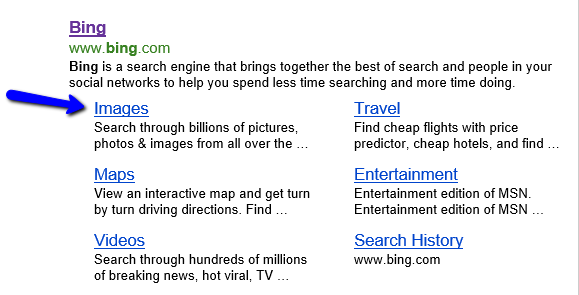Microsoft’s search engine Bing has been valiantly working to win search market share from Google, incorporating social components to provide users with seamless web experiences. A recent Bing Blog post announced another feature that further encourages webmasters to consider the site as a valuable tool in their SEO and content marketing strategies – control over deep linking in SERPs.
The new Deep Link Management function might bring more traffic to the page, as SEOs can manually change the links listed below domains in SERPs, directing internet users to pages that will provide the most valuable information. Previously, the engine used an algorithm to display these links, giving visitors easy access to popular site destinations.
“These deep links are generated algorithmically. Generally, the algorithms do a great job at finding useful links that make it easier for our users to navigate to popular pages on your site,” the blog states.

However, there are some cases in which webmasters might not want particular pages displayed upfront. “Perhaps you feel the text isn’t great. Perhaps you simply don’t want us to highlight the destination page as a deep link. Perhaps we got it all wrong.”
With the new function, publishers can manually block the pages they don’t want displayed as deep links for all searches and for specific results or particular countries and regions. Through audience targeting, SEOs can ensure their visitors have optimal on-site experiences when searching for web content.
If Bing’s updates prove successful, the site might continue to edge into Google’s reigning dominance as the No. 1 search engine and alter internet users’ search behaviors. Microsoft sites ranked third in comScore’s May 2013 Media Metrix Top 50 U.S. Web Properties List (behind Google and Yahoo pages) and are currently second for explicit core searches.




